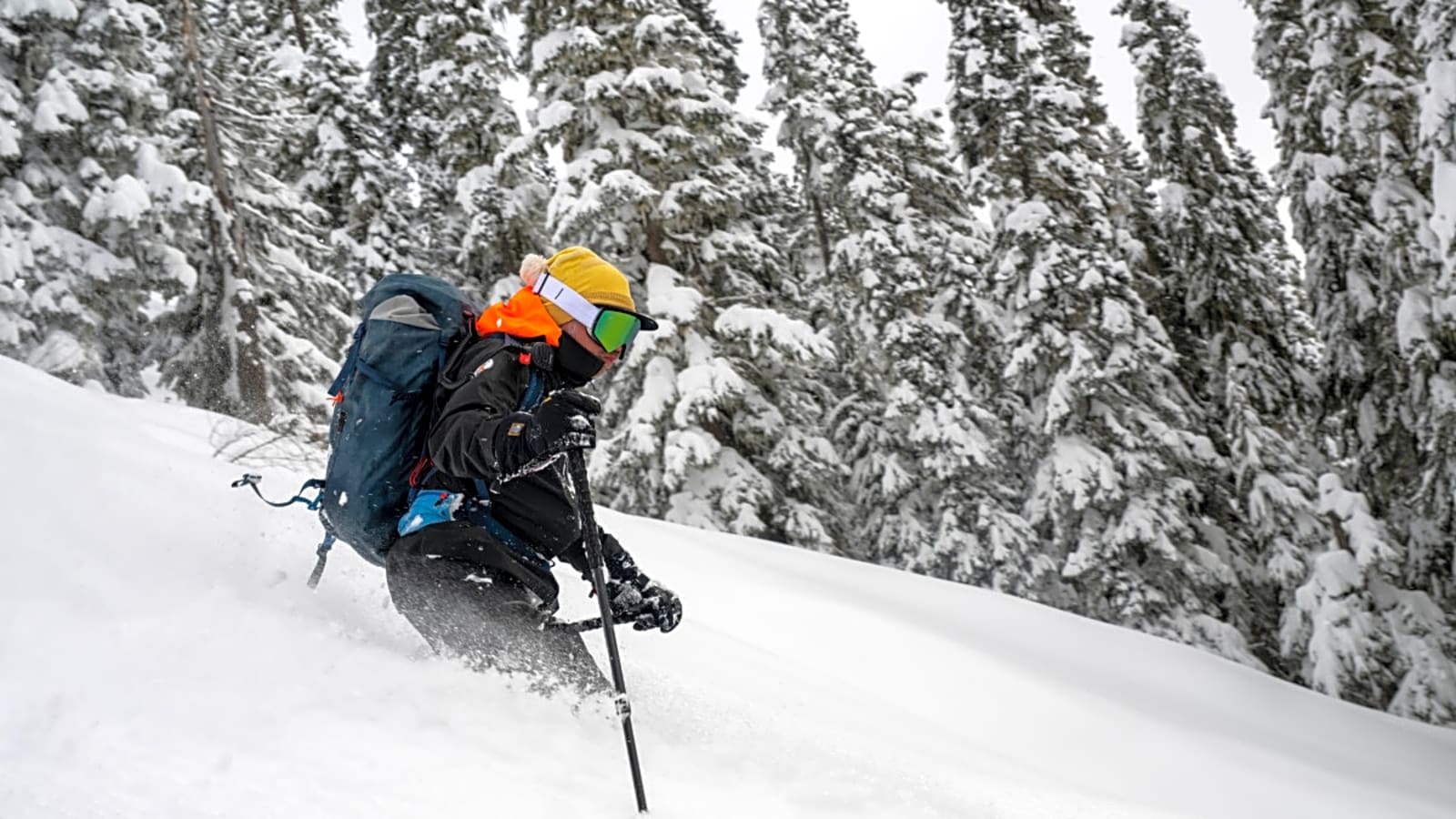
The mountains are, among other things, a place to test yourself. Big, scary peaks loom in the distance. A challenging ski tour in the backcountry awaits. The icy roads that lead to ski resorts will challenge even the steadiest drivers.
These skiing rites of passage aren’t always serious, though. Sure, they can involve finally completing a tough run, but some sillier experiences—like losing control of your bladder at the wrong time, or owning a pair of ski boots that don’t fit right—have a sense of universality, too. So do the moments that are pure fun, like discovering your next favorite pair of skis or sliding through powder for the first time.
These are six rites of passage most skiers will recognize, from the beautifully memorable moments to those we wish we could forget.
Want to keep up with the best stories and photos in skiing? Subscribe to the new Powder To The People newsletter for weekly updates.
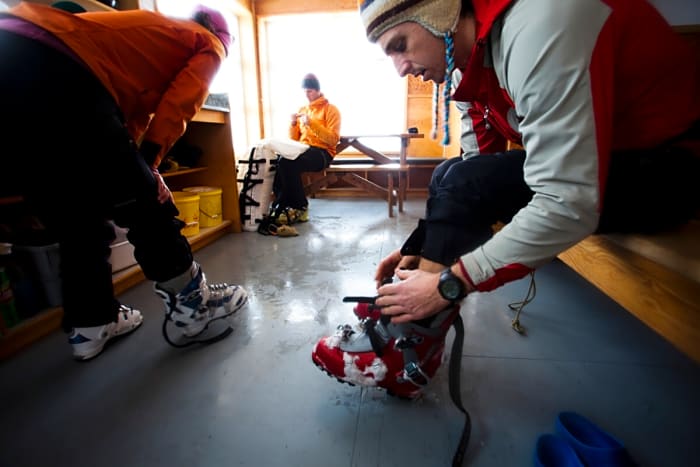
1. The Boots Don’t Fit
These ski boots sucked in one of a few ways.
Perhaps they were so tight that, within minutes of putting them on, you started to feel your heartbeat in your feet. The pressure points set in soon afterward, lighting up the contours of your feet with fiery blossoms of pain.
The only saving grace is that truly snug boots usually, after a few hours, make your feet go entirely numb. But then, when you take them off, your achy feet offer an unpleasant reminder: the privilege of foot torture can cost $800.
It also goes the other way. Sometimes, ski boots are too big. When this happens, even the best skiers will start second-guessing themselves. Did I forget how to ski? Why can’t I stay composed in chopped-up snow?
The doubt proliferates until, one day, an epiphany arrives. Your heels shouldn’t be lifting three inches every turn. Ski boots don’t have to feel like wet styrofoam. If your boots are sized correctly, you probably won’t have to crank every buckle down completely.
The boots that don’t fit are, in a way, a gift. After you endure them, boots that actually do what they’re supposed to do—without needless discomfort, that is—will feel divine. We all deserve to have happy feet. If you haven’t gotten there yet, keep searching. Find a bootfitter who knows what they’re doing. It’s worth it.
2. Wetting Your Snow Pants
This isn’t the easiest thing to admit publicly. I’ll start with the premise. When I was young, my elementary school had a ski bus. On nippy Washington mornings during the winter, all the other kids and I would bundle up, ride the bus, and then spend the day at Crystal Mountain. Usually, that was great. But one time, I had issues with my bladder.
I can’t remember exactly what happened. I might’ve been too shy to tell my instructor that I had to pee. Maybe I was worried about holding up the group. Regardless, while sitting in the snow on the side of a run, I couldn’t take it anymore and let go.
I didn’t tell anyone what happened, even as I endured one of the soggiest, most unpleasant ski days I’ve ever experienced, followed by an equally damp bus ride home. Whoever was sitting next to me on the way back was apparently polite enough to refrain from telling me that I smelled like a urinal cake.
Is this a rite of passage? I think so, at least for those who started skiing while that whole potty training thing was still hit or miss. If not, I pissed myself for no good reason.
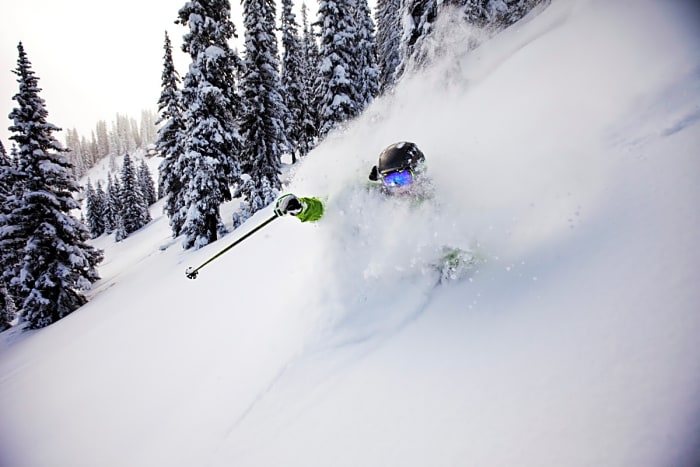
3. Your First Real Powder Day
No matter how old you were when it first happened, your first powder day is likely filed neatly in that folder in your brain that reads, “No matter how old I get, I hope I never forget this moment.”
We were all beginners once, gingerly navigating our way down groomed trails or scuffed-up mogul fields with the vague awareness that skiing had more to offer. When that first storm finally hit, and you decided—or were urged by a friend or mentor—to head off trail, everything changed.
The floating sensation can’t be replaced. Suddenly, all those skiers waiting in lift lines for hours don’t seem like they’d lost their minds. Soon enough, you became one of them. If you’re religious, powder skiing could be seen as proof that God exists. If you’re not, it’s reason enough to entertain the thought of a benevolent, all-powerful deity.
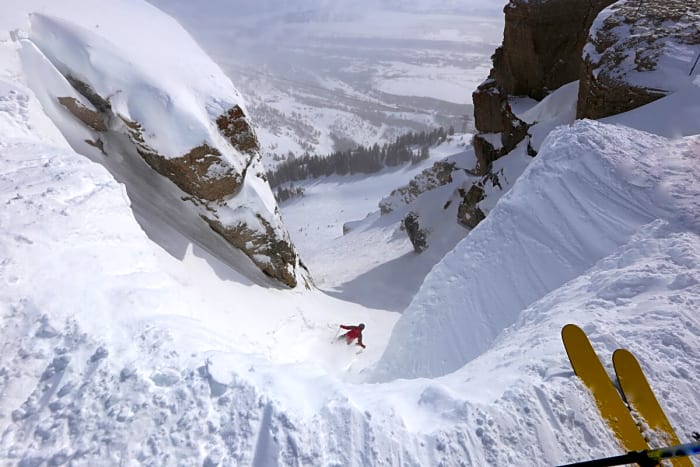
4. The First Double Black Diamond
Somewhere between becoming a strong intermediate or expert, the colorful shapes that demarcate trail difficulties start losing their meaning for skiers. Instead of wondering if a trail is a blue square or black diamond, they might instead ask the following questions: How steep is it? Are there rocks? Do I need to squeeze through a tiny chute? What about cliffs? Will I jump off any of them?
But for every skier, there was a point in their journey where those colors and the phrase “double black diamond” held real power. Depending on who you are, that might still be the case (you’re lucky—one of the best runs of your life hasn’t happened yet). Regardless, finding the courage to ski a double black diamond for the first time is a watershed moment.
Oftentimes, it involves stages. First, there’s the fear and uncertainty. Then come the slow, tentative turns. Somewhere in the middle of the run, it hits you—I can do this, and it’s not nearly as bad as I thought it would be. At the bottom of the run, relief and a deep sense of accomplishment wash over you. You’ve earned a new badge of honor.
Skiing’s an endlessly good time, but it’s also a great way to improve one's sense of self-worth. Anyone would feel more sure of themselves after skiing something with a hilariously intimidating name like “Bone Crusher.”
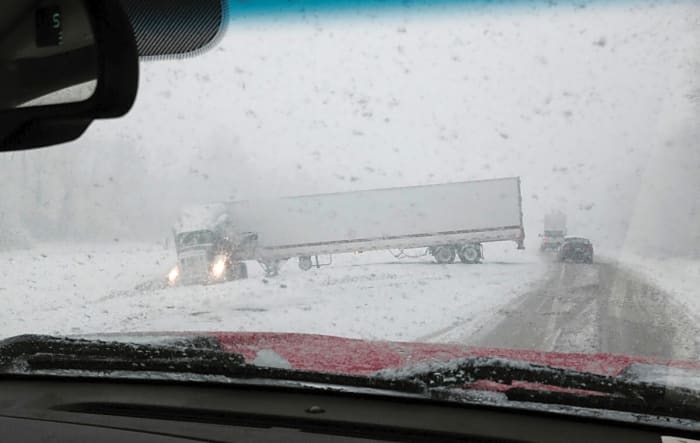
5. A Drive From Hell
While I was attending university, a few friends and I decided to drive across British Columbia, starting in Squamish and ending in Golden. We aimed for Kicking Horse. Our classes ended that afternoon, so we climbed into my friend’s truck and drove into the gathering dusk.
By the time we reached Kamloops, it was dark. The road was slick, and snowflakes shot over the windshield like falling stars. We’d only learn this later, but my friend—the driver—in all his brilliance, had forgotten to put his truck in four-wheel drive. Suddenly, we were spinning at 50 miles per hour. One gentle thump later, the truck was resting against a snow drift on the side of the road. We’d almost done a complete 360.
A car pulled up to check and see if we were okay. We were, thankfully, completely fine, but a bit embarrassed after hearing a kid in the backseat of the other car shout, “That was crazy!” All of us were too stunned to provide a witty response, staring back across the road glassy-eyed.
To be a skier is to accept that, whether or not you experience a close call, you’ll probably find yourself driving in the worst road conditions imaginable. On the bright side, after making it to the mountain and back in one piece during the storm of the century, you’ll have a good story or two to tell.

6. The Skis That Made You See the Light
Beginner skis aren’t necessarily designed with performance in mind. Instead, they need to be approachable and as user-friendly as possible. That comes with some compromises. They’ll handle admirably at slow speeds on groomed terrain, but once you try to ski anything interesting, they may not be able to keep up.
Skiing some sticks with more backbone, then, is revelatory. They don’t need to be 188-centimeter two-by-fours. Approachable, relatively soft all-mountain skis also count, and, to be honest, the exact shape or ski model doesn’t really matter. The skis just need to be good enough to change your perspective and your confidence for the better.
If you’ve spent a good chunk of your life skiing, you already have a pair in mind.
More must-reads:
- Chiefs sign star offensive lineman to $94 million deal
- Mavericks center Dereck Lively II reportedly undergoes foot surgery
- The 'No. 1 overall MLB Draft picks' quiz
Breaking News
Trending News
Customize Your Newsletter
 +
+
Get the latest news and rumors, customized to your favorite sports and teams. Emailed daily. Always free!








